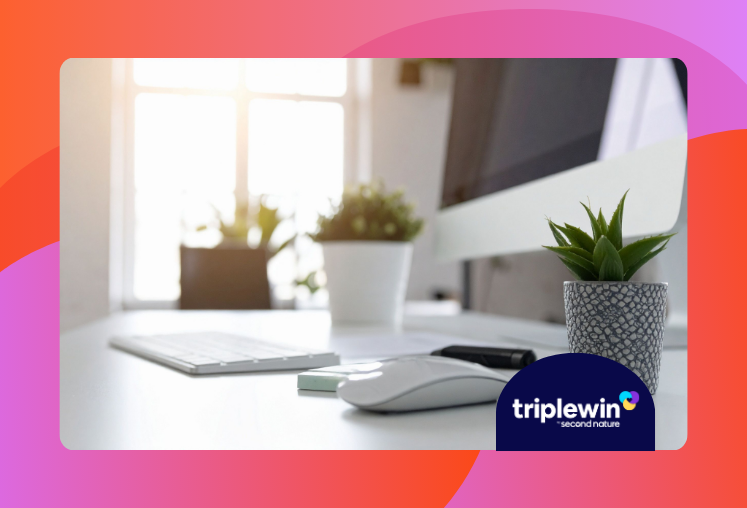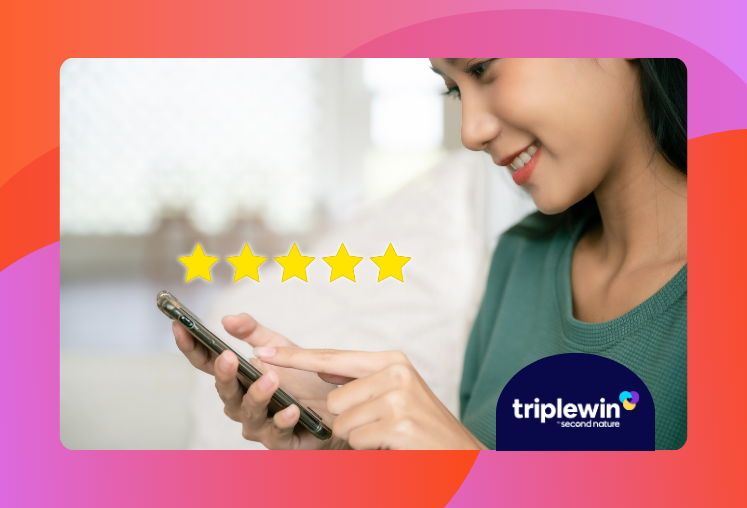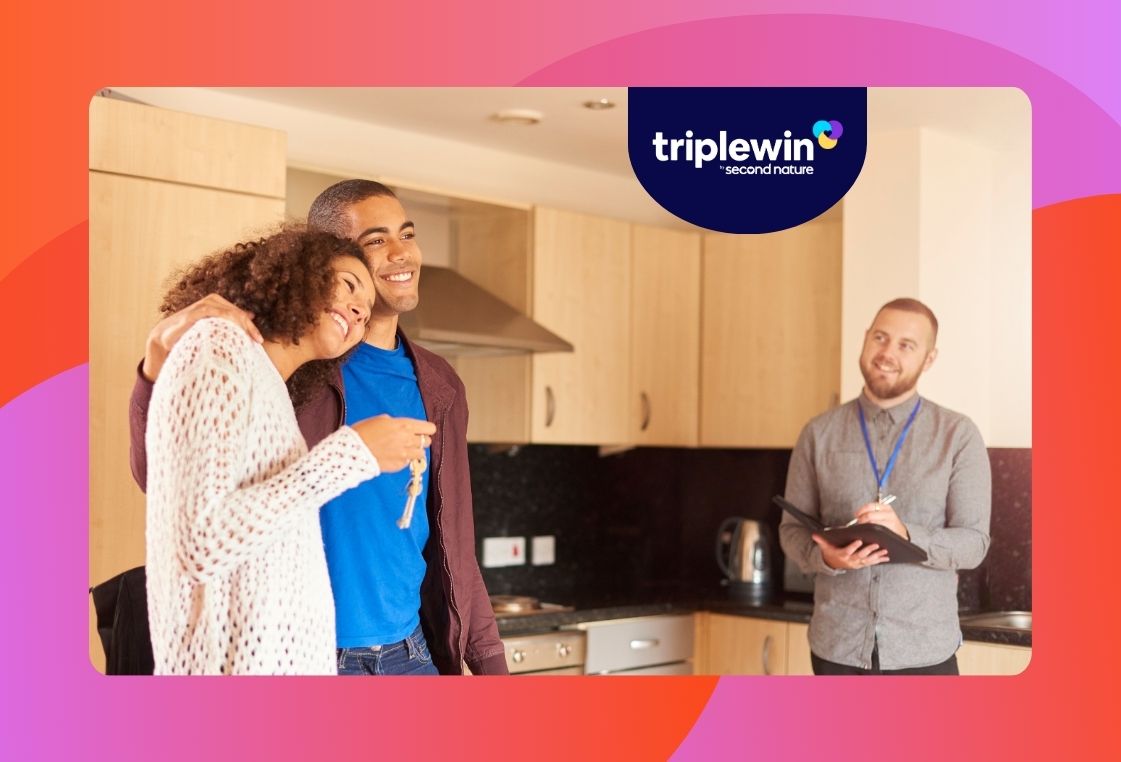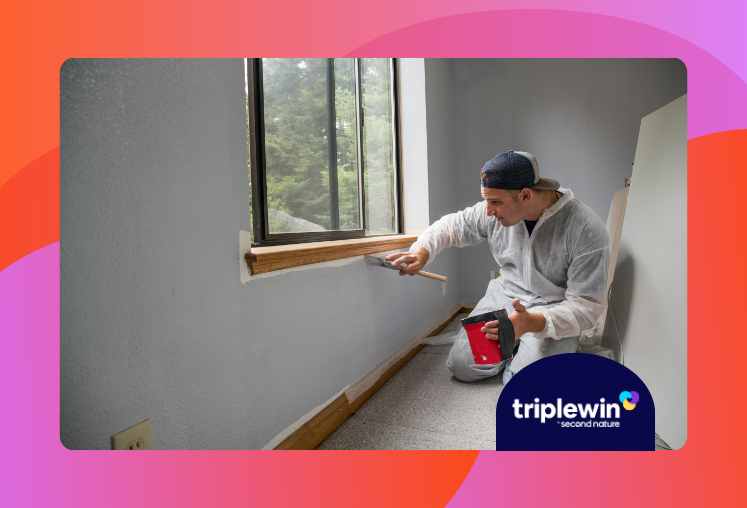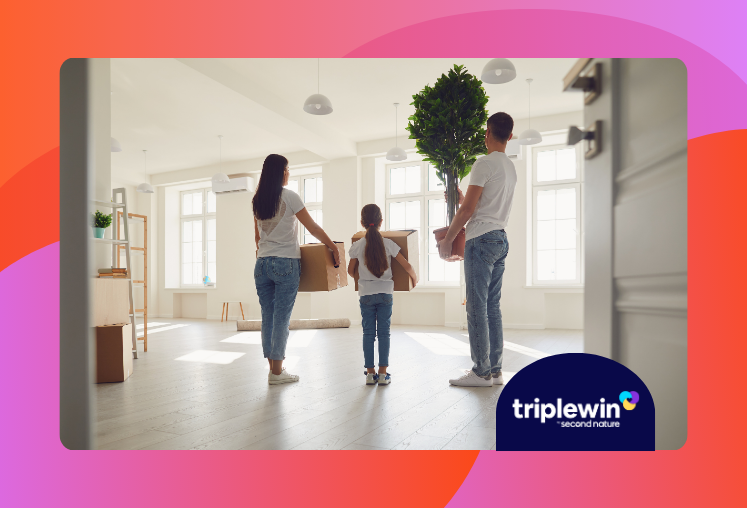AI Property Management Software: Achieve Higher ROI with More Satisfied Residents
AI property management software is helping property managers save hours, cut costs, and keep residents longer. By automating time-consuming tasks like scheduling, rent reminders, and maintenance tracking, these tools give you more bandwidth to focus on what matters most: resident satisfaction and portfolio growth. But how do you know which AI property management software is right for your team? In this guide, we’ll look at the strongest AI property management software options available today, from established names like AppFolio and Buildium to innovative AI-first platforms. You’ll see how features like predictive maintenance, automated messaging, and smart rent workflows can transform day-to-day operations. Plus, you’ll see an overhead view of where each tool fits best depending on your portfolio type. What is AI property management software and how does it work? AI property management software uses artificial intelligence to automate and improve daily property management tasks. Instead of manually tracking rent payments, responding to maintenance requests, or juggling dozens of vendor schedules, these systems handle the busywork in the background. This lets you focus on strategy and resident relationships. At its core, the right AI property management software learns from your portfolio data to make smarter, faster decisions. That can mean: Predictive maintenance to flag potential issues before they become expensive repairs. Automated messaging that answers resident questions instantly and keeps communication consistent. Smart scheduling to coordinate vendors and team members without manual back-and-forth. Data-driven insights that help you adjust pricing, renewal strategies, and marketing spend. The result is a system that speeds up repetitive workflows and also supports better decision-making across your entire portfolio. These AI tools adapt to your processes and scale as you grow. They can be applied to the management of single-family homes, multifamily communities, or mixed portfolios. Why are property managers investing in AI property management software? The demands on property managers have never been higher. You’re expected to keep operating costs low, meet rising resident expectations, and manage growing portfolios. You’re also asked to do all of this without adding staff, which is not an easy job! AI property management software is helping bridge that gap. Three big shifts are driving adoption: Higher resident expectations: Residents now expect the same speed and convenience they get from popular apps. They want immediate answers, instant maintenance fixes, and easy self-service tools. Tighter margins: Maintenance costs, turnover expenses, and labor shortages are eating into profitability. AI helps control these costs by automating time-consuming tasks and spotting problems early. A shift from reactive to proactive management: Instead of scrambling to fix problems after they happen, AI tools predict issues and automate preventive measures. Overall, this will keep your properties in better condition and residents more satisfied. For many operators, AI property management software is becoming essential for scaling. Which AI property management software platforms should you test? The AI property management software you choose will come down to three categories: Your portfolio type Budget The workflows you’ll be streamlining Let’s take a brief look at each platform to help you match AI property management software to your portfolio type. AppFolio AppFolio blends property management features with AI capabilities like automated leasing workflows, rent collection, and smart maintenance scheduling. Its AI Leasing Assistant “Lisa” responds to inquiries 24/7, qualifies leads, and books showings automatically. The platform’s advanced analytics also provide real-time portfolio performance insights. Best for: Mid-size to large portfolios needing a comprehensive, all-in-one solution with deep integrations. Buildium Buildium is the AI property management software best known for its approachable interface and quick onboarding. This is ideal for teams without a dedicated tech department. Its AI features include automated rent reminders, dynamic pricing recommendations, and resident churn prediction. Buildium also integrates with popular maintenance platforms, making it easier to track vendor performance and resident satisfaction without switching systems. Best for: Small to mid-size property management companies that want straightforward AI tools alongside core PM features. Hemlane Hemlane focuses on remote-friendly property management. Its AI-driven leasing automation, maintenance coordination, and compliance tracking are designed for operators managing scattered-site properties. The smart task routing ensures requests are sent to the right vendors quickly, reducing delays and resident frustration. It also offers virtual showing capabilities, allowing you to lease units without being on-site. Best for: Single-family operators and geographically dispersed portfolios. AI-first tools These next platforms were built from the ground up with AI at their core. They often integrate with larger property management systems to add specialized capabilities without replacing your current tech stack. Stan.ai: AI-powered leasing assistant that handles inquiries, books showings, and nurtures leads automatically. It’s designed to boost leasing speed and conversion rates. EliseAI: Conversational AI for resident communication, maintenance requests, and leasing, with natural language capabilities that mimic human conversation. MagicDoor: Combines AI with resident engagement features like rewards programs, automated reminders, and event scheduling to increase satisfaction and retention. Trudi.ai: AI assistant for automating routine administrative tasks, from responding to emails to scheduling maintenance, freeing up staff time for higher-priority work. Next, we’ll take a look at which AI property management software fits with your portfolio type. How to choose the best AI property management software for your portfolio type Choosing the right AI property management software starts with considering your portfolio type. The chart below breaks down which tools work best for different portfolio types, so you can see at a glance where each option fits. Portfolio type Key needs and priorities Recommended platforms Standout AI features Single-family operators Remote management, vendor coordination, leasing automation, and maintenance tracking Hemlane, Trudi.ai, MagicDoor AI leasing assistant, smart maintenance routing, mobile-first workflows Small- to mid-size multifamily Centralized operations, predictive maintenance, resident self-service Buildium, AppFolio Predictive maintenance alerts, AI-driven rent reminders, unified dashboard Large-scale portfolios Scalability, deep integrations, high-volume automation, and advanced analytics AppFolio + Stan.ai or EliseAI Conversational AI for residents, bulk task automation, and rent optimization analytics Best AI property management software for single-family operators For single-family and scattered-site management, efficiency hinges on eliminating manual tasks that typically consume a significant portion of your day. You should be on the lookout for: Remote-friendly tools: These allow you to manage leasing, inspections, and maintenance without being on-site. AI leasing assistants: Respond to inquiries 24/7 and prequalify leads, cutting down on missed opportunities. Maintenance automation: Route requests directly to vendors and track completion in real time. Best fits: Hemlane, Trudi.ai, MagicDoor. These offer simple, affordable automation without the overhead of a full enterprise platform. Best AI property management software for small- to mid-size multifamily portfolios For portfolios in this range, the challenge is managing higher resident density while maintaining a personalized touch. Priorities include: Centralized dashboards: Combine accounting, leasing, maintenance, and communication in one system. Predictive maintenance features: Help to avoid costly emergencies and extend the life of building systems. Resident self-service portals: For rent payments, renewals, and service requests, which in turn reduces inbound calls and emails. Best fits: Buildium, AppFolio. Both offer integrated AI capabilities without requiring you to piece together multiple tools. Best AI property management software for large-scale portfolios When you’re managing hundreds or thousands of units, scalability and integration are key. You can keep your focus on: High-volume automation: For leasing, renewals, and maintenance coordination. Deep integrations: Manage the business end-to-end with accounting, CRM, and marketing tools. Advanced analytics: Spot trends, optimize rent pricing, and forecast maintenance budgets. Best fits: AppFolio for an all-in-one approach, or combining it with AI-first tools like Stan.ai or EliseAI for advanced resident engagement and lead management. Finding the right AI property management software is key. But what is the overall benefit to using them once you’ve found the right one? That’s what we’ll take a look at next. What are the key benefits of AI property management software? When you’re looking at the benefits AI property management software brings, you’re really calculating your return on investment (ROI). You want to see the measurable impact that new tools can have on your bottom line and resident retention. When implemented strategically, AI property management software can: 1. Save time on repetitive work AI can handle routine tasks instantly. This frees up your team to focus on owner relations, strategic marketing, or resident engagement. 2. Reduce maintenance costs Predictive maintenance tools analyze historical data and property conditions to flag potential issues early. Fixing a problem before it escalates can save hundreds, or sometimes thousands, per property each year. 3. Improve resident satisfaction and retention Fast response times, proactive communication, and self-service options create a smoother resident experience. The easier it is for residents to pay rent, request service, or get information, the more likely they are to renew. 4. Enhance decision-making with better data AI platforms consolidate your operational data into actionable insights. This can help you: Optimize rent prices based on market trends Identify at-risk residents before they give notice Adjust marketing spend to target the highest-converting channels 5. Scale without adding headcount Because AI handles high-volume, low-complexity work, you can grow your portfolio without increasing staff at the same rate. 6. Streamline communication AI-driven messaging keeps owners, residents, and vendors informed automatically. Your team stays on the same page with a unified system of communication. What are the common challenges when adopting AI property management software? AI property management software can transform operations, but adoption doesn’t come without hurdles. These are some of the challenges to be aware of, especially as you integrate AI property management software with your team: 1. Data accuracy and quality AI is only as good as the data you feed it. If your records are incomplete, outdated, or inconsistent across systems, automation may produce inaccurate insights or send the wrong messages to residents. 2. Integration gaps Not all AI platforms play nicely with your existing tools. Confirm that the software integrates with your accounting, CRM, marketing, and maintenance systems. 3. Balancing automation with human oversight While AI can handle routine communication, resident relationships often require empathy and context. Over-relying on automation can make interactions feel impersonal and lead to missed opportunities for connection. 4. Change management Your team will need training to use the new tools effectively. Prioritize clear onboarding and process updates. 5. Compliance and security concerns AI platforms process sensitive resident and owner information. Make sure your AI property management software meets data protection and privacy regulations in your region. 6. Overestimating capabilities AI property management software can be a powerful tool, but it’s not a magic wand. Setting realistic expectations about what it can and can’t do is important for measuring ROI and avoiding disappointment. How Second Nature complements AI property management software These AI property management software platforms have the potential to generate a higher ROI for your entire portfolio. But, there is a level of human touch that keeps residents satisfied and renewing. Second Nature’s fully managed Resident Benefits Package complements AI property management software to deliver tangible, high-value services residents can see and feel. These services go beyond AI processes to create a living experience that current and future residents are willing to pay for and stay for. Here’s how Second Nature’s Resident Benefits Package works: Proactive maintenance engagement: Built-in programs like air filter delivery encourage residents to take care of small maintenance tasks before they escalate. Changing air filters at the right time can reduce HVAC-related work orders by 37%. Resident rewards program: Incentivizes on-time rent payments and other positive behaviors with gift cards and rewards. Credit building: Automatically reports on-time rent to all three major credit bureaus, boosting residents’ financial health. Renters Insurance Compliance: Tracks coverage for every resident, automatically enrolling them if a policy lapses. Your AI property management software will help keep your operations efficient. Second Nature keeps the resident experience on pace. Together, they create a powerful combination: streamlined workflows, happier residents, and a healthier bottom line. As an example of how the Resident Benefits Package works, Hive Real Estate saw a 40% increase in on-time payments and a 50% reduction in maintenance requests. Elevate your AI property management software with Second Nature AI property management software can streamline your day-to-day. Pair it with Second Nature, and you’ll create a resident experience that drives renewals, reduces maintenance costs, and delivers higher ROI without adding to your workload. See how your current tools and Second Nature’s fully managed Resident Benefits Package can work together to keep residents paying and staying. Try out a demo today and discover how to make every property in your portfolio easier to manage and more profitable to own. FAQ What is AI property management software? AI property management software is a digital platform that uses artificial intelligence to automate and improve core property management tasks. It can handle rent collection, predictive maintenance scheduling, resident communication, vendor coordination, and portfolio analytics without manual intervention. These tools help landlords, property managers, and real estate investors reduce operating costs and improve resident satisfaction. How does AI property management software work? AI-powered property management systems use algorithms and machine learning models to analyze data from your portfolio. This enables features like smart rent reminders, automated maintenance requests, conversational AI for resident support, and dynamic pricing recommendations. The software can integrate with accounting systems, CRM platforms, and leasing tools to create a connected property management workflow. What are the benefits of AI property management software? The main benefits include time savings through automation of repetitive tasks like rent reminders and vendor scheduling, lower maintenance costs with predictive maintenance tools that flag issues early, improved resident retention via proactive communication and self-service portals, better decision-making using data-driven insights for pricing, renewals, and marketing, and scalability without adding headcount. Which AI property management software is best for my portfolio type? The best choice depends on your portfolio. Single-family operators may prefer Hemlane, MagicDoor, or Trudi.ai for remote-friendly management. Small- to mid-size multifamily operators may benefit from Buildium or AppFolio for predictive maintenance and resident self-service. Large-scale portfolios can pair AppFolio with Stan.ai or EliseAI for advanced analytics and resident engagement. Does AI property management software replace human managers? No. While AI can automate many administrative and operational tasks, it cannot replace the human element of property management—especially when it comes to empathy, negotiation, and relationship-building with residents. Instead, it frees up managers to focus on strategic growth and customer experience. How much does AI property management software cost? Pricing varies based on features, portfolio size, and whether you choose an all-in-one platform or an AI-first tool that integrates with existing systems. Entry-level solutions may start at $1–$2 per unit per month, while enterprise systems can cost more depending on customization and support. Can AI property management software integrate with my existing systems? Most modern AI property management platforms integrate with popular accounting software, CRM tools, maintenance tracking systems, and marketing platforms. Always confirm compatibility before purchasing to ensure seamless workflows. How does AI property management software improve resident satisfaction? By automating communication, providing 24/7 responses to inquiries, enabling faster maintenance resolution, and offering self-service portals, AI tools make the rental experience easier and more convenient—key factors in boosting lease renewals.
 August 21, 2025
August 21, 2025
Read more
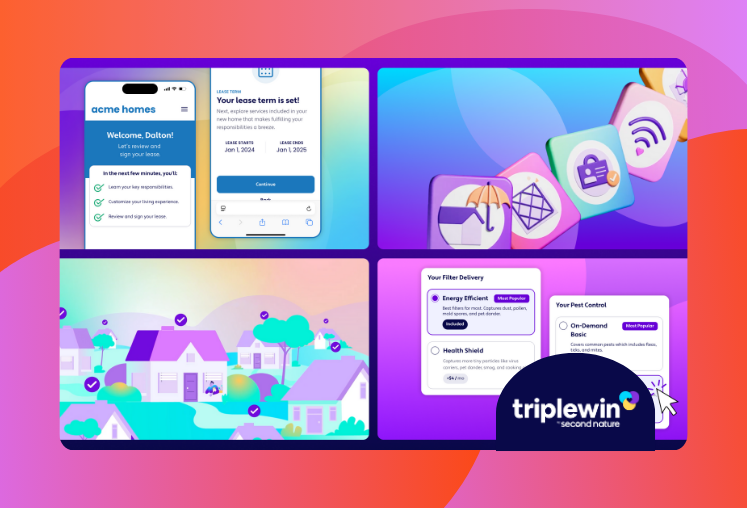
October 15, 2025




